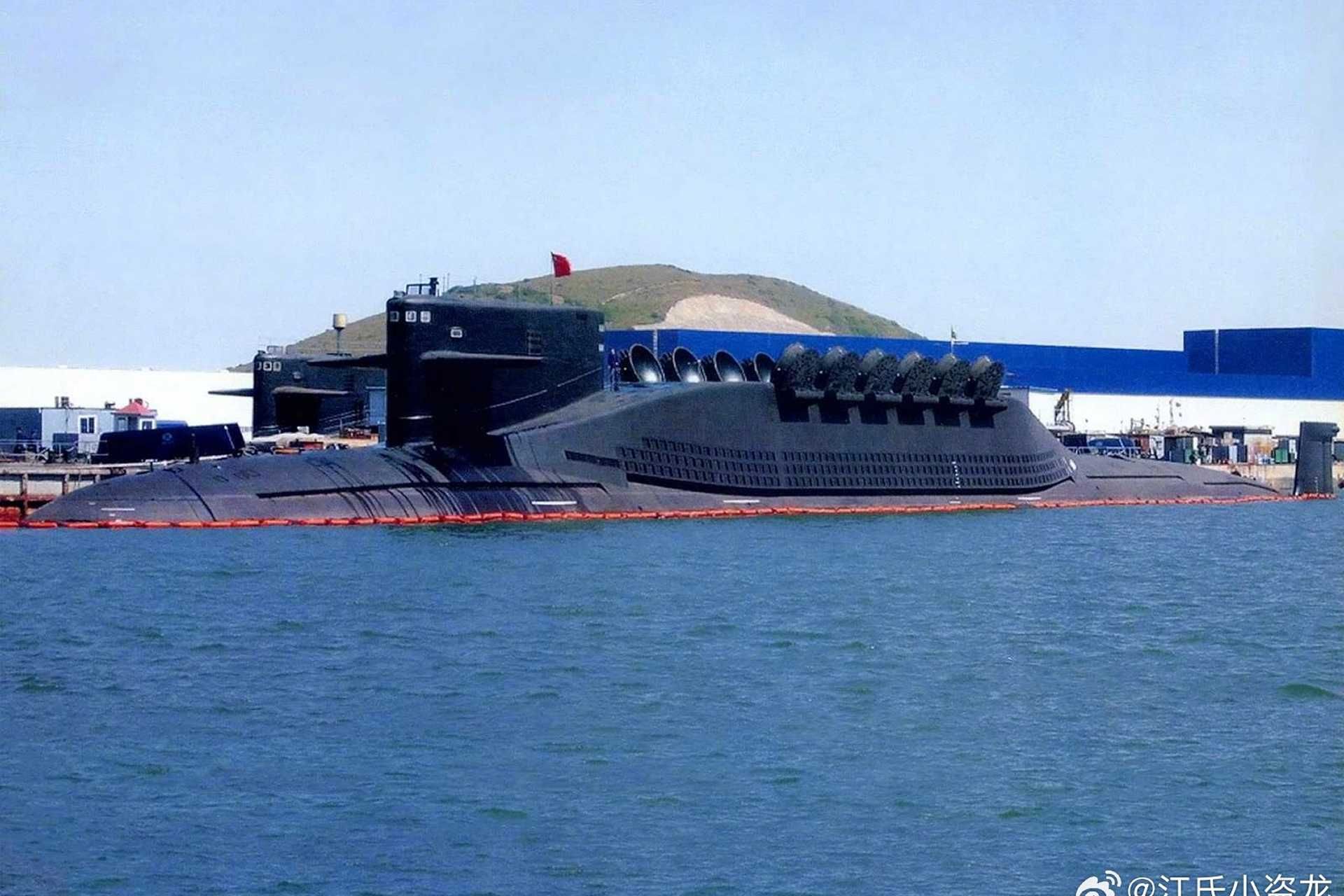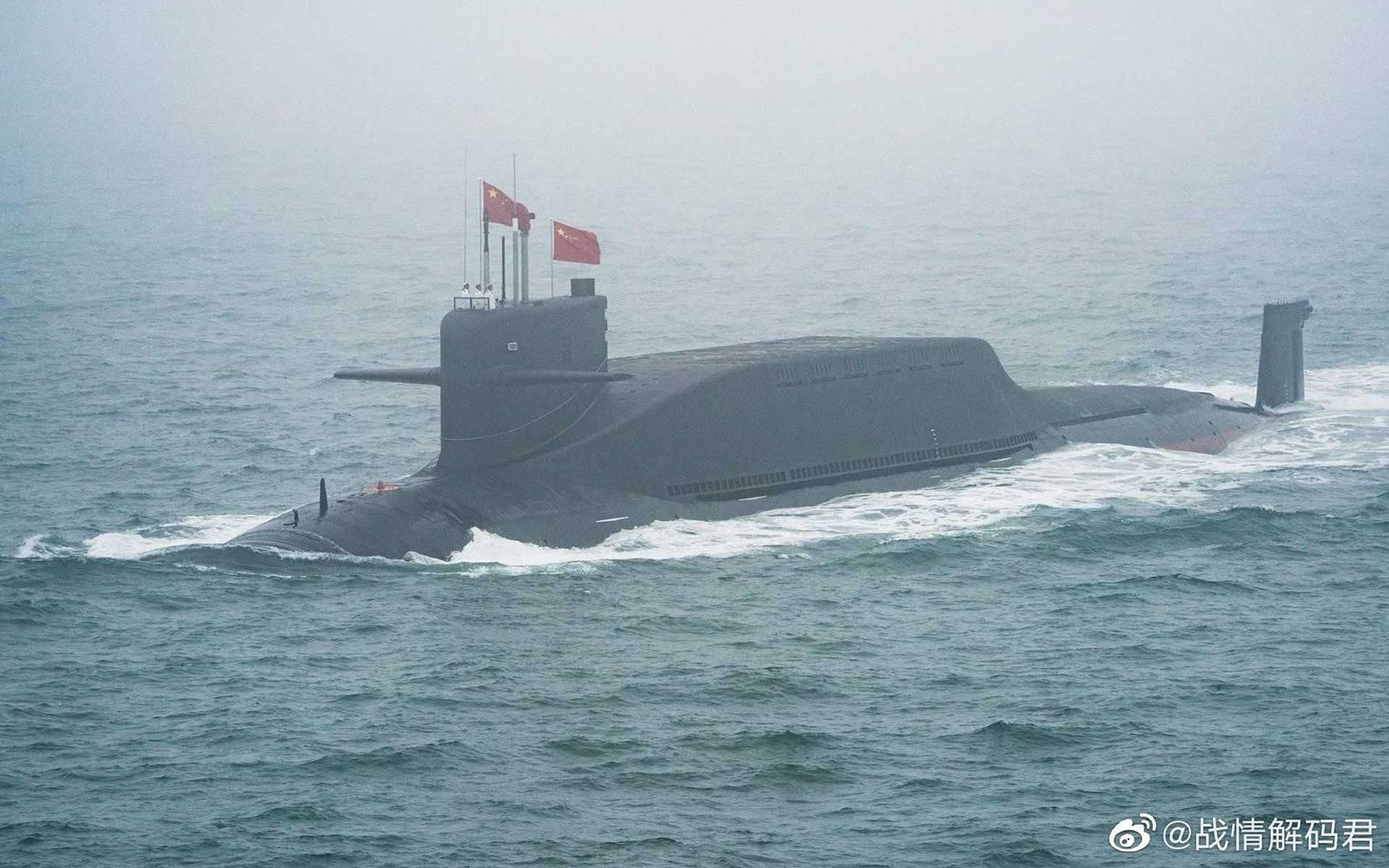Breaking News
US officially recognizes the Type 094 Jin-class submarine as China’s first credible naval nuclear deterrent.
On March 26, 2025, the U.S. Strategic Command officially assessed that the Chinese People’s Liberation Army Navy (PLAN) operates six Jin-class (Type 094) ballistic missile submarines (SSBNs), constituting China’s first credible sea-based nuclear deterrent, as each vessel is equipped with up to 12 submarine-launched ballistic missiles (SLBMs). This capability provides China with a naval second-strike option and is part of a broader expansion of its strategic forces, aligning with President Xi Jinping’s directive for the military to be prepared for a potential operation against Taiwan by 2027, which has driven investments in land-based missiles, strategic bombers, and naval assets.
Follow Army Recognition on Google News at this link

The Chinese Navy now operates six Jin-class (Type 094) nuclear-powered ballistic missile submarines (SSBNs), each capable of striking regional targets and, from certain positions, parts of the United States, including Alaska, Guam, and Hawaii. (Picture source: Weibo/江氏小盗龙)
According to the U.S. Strategic Command, China is rapidly expanding its nuclear arsenal and delivery systems, including scaling up warhead production through breeder reactors that may generate weapons-grade plutonium and fielding new delivery platforms. China has now exceeded 600 operational nuclear warheads and is projected to reach over 1,000 by 2030. This marks a significant increase from an estimated 290 warheads in 2019 and around 500 by 2024. Multiple independent assessments similarly forecast a growth toward 1,000 warheads by 2030. China is also reportedly increasing the readiness of its nuclear forces, with indications that a limited number of nuclear warheads may now be deployed on missiles during peacetime—diverging from previous practices of keeping warheads separated.
A key component of China’s nuclear modernization involves strengthening its sea-based deterrent. The PLAN now operates six Jin-class (Type 094) nuclear-powered ballistic missile submarines (SSBNs), each capable of launching up to 12 submarine-launched ballistic missiles (SLBMs). These submarines initially deployed the JL-2 missile (range ~7,200 km), but more recent variants are being equipped with the JL-3 SLBM (range ~10,000 km), enabling strikes against parts of the continental United States from patrol areas closer to China.
Satellite imagery taken on February 4, 2025, and shared by Tom Shugart on February 7, also revealed multiple developments at China’s Huludao nuclear submarine shipyard. One Type 093B nuclear-powered attack submarine (SSN) was seen with its vertical launch system (VLS) hatches open, displaying what appear to be 12 individual cells, confirming the integration of a VLS capability in this class. A separate Type 093B submarine was positioned on the shipyard’s transfer dock, a location typically used for launching new vessels. A total of at least four submarines from the Type 093 series were visible at the site, though it remains undetermined whether they are newly constructed units or undergoing maintenance.
Analysts have assessed that between seven and eight Type 093B submarines have been produced over the past three years, a quantity that surpasses the cumulative number of nuclear-powered attack submarines constructed by China in the preceding thirty years. Including conventionally powered submarines such as the Type 039C, China is estimated to have launched over 15 submarines during this period. The increased production rate may indicate a transitional phase ahead of the introduction of the next-generation Type 095 SSN. The expanding SSN fleet is expected to replace aging platforms, support long-range patrols, escort carrier groups, and contribute to strategic deterrence missions, while conventionally powered submarines such as the Type 039C are likely to remain focused on regional and littoral operations.
Despite these developments, China's sea-based nuclear forces remain smaller and less technologically mature than those of other major powers. The Jin-class is considered China’s first operational sea-based deterrent, but assessments from Chinese sources note that the Type 094 has acoustic limitations compared to U.S., Russian, French, and British SSBNs. The original design is considered significantly louder than more recent U.S. or Russian submarines, although incremental improvements (e.g., the Type 094A) have been made to reduce noise.
China is also developing a new Type 096 SSBN, which is expected to feature additional silencing technologies and a larger missile payload. Open-source reporting suggests the Type 096 may carry 16–24 SLBMs with longer ranges and potentially multiple warheads. Intelligence sources indicate possible technical collaboration with Russia, including propulsion system design inspired by the Borei-class pump-jet technology. Given typical SSBN service lives of 30–40 years, China is expected to operate both Jin- and Type 096-class submarines into the 2050s, potentially growing the SSBN fleet to 8–10 units within the next decade.

The Jin-class is regarded as China's most formidable submarine due to the fact that each Type 094 is equipped with 12 missile tubes capable of launching JL-2 submarine-launched ballistic missiles (SLBMs). (Picture source: Weibo/江氏小盗龙)
When compared to the submarine-based nuclear forces of the other permanent members of the Security Council, China’s SSBN force is currently composed of six Jin-class (Type 094) SSBNs, each equipped with 12 JL-3 SLBMs (~10,000 km range). These SLBMs are likely armed with single warheads, yielding an estimated total of 72 sea-based warheads. The Type 096 under development is expected to be quieter and carry a higher missile load with longer-range SLBMs. China’s SSBN patrols are thought to remain in maritime zones near its coast, such as the South China Sea.
United States operates 14 Ohio-class SSBNs, each capable of carrying up to 24 Trident II D5 SLBMs. Under treaty limits, 20 launchers are active per boat. Each Trident II can carry up to eight MIRVs, resulting in a potential maximum fleet capacity of around 1,920 warheads. U.S. SSBNs conduct global patrols and represent the most survivable element of the nuclear triad. The upcoming Columbia-class SSBNs, entering service in the 2030s, will feature electric drive propulsion for reduced acoustic signature and extended survivability into the 2080s.
Russia maintains approximately 10–11 SSBNs, including Delta IV and Borei-A-class submarines. These platforms launch R-29RMU Sineva or RSM-56 Bulava SLBMs with ranges above 8,000 km. Each submarine can carry up to 16 missiles, many with multiple warheads, giving Russia’s SSBN fleet an estimated capacity exceeding 700 warheads. Russian SSBNs primarily operate in protected Arctic areas. The Borei-A class includes pump-jet propulsion and may eventually carry new strategic systems such as the Poseidon nuclear-powered underwater drone.
France operates four Triomphant-class SSBNs, each equipped with 16 M51.2 or M51.3 SLBMs. These missiles exceed 9,000 km in range and can carry up to six MIRVs, totaling a maximum of around 96 warheads per submarine. France supplements its sea-based deterrent with a small air-delivered nuclear capability. One SSBN is maintained on continuous patrol. The next-generation SNLE 3G submarine is scheduled for service in the 2030s and will incorporate further stealth improvements and M51.3 missiles.
United Kingdom relies solely on four Vanguard-class SSBNs for its strategic nuclear forces. These submarines are armed with Trident II D5 SLBMs (acquired from the United States), each with a potential load of up to eight warheads. Operationally, the UK reportedly limits warhead numbers to around 40 per submarine. The UK maintains a continuous at-sea deterrent, ensuring one SSBN is always on patrol. The Dreadnought-class will begin replacing the Vanguard-class in the late 2020s and is expected to sustain this policy through the 2050s.
China’s nuclear expansion raises multiple strategic considerations. While the country continues to emphasize its no-first-use policy and minimum deterrence posture, the scale and pace of modernization are notable. The development of a survivable second-strike capability, especially through SSBNs, suggests a shift toward greater operational flexibility.
These developments may contribute to strategic stability by reinforcing assured retaliation, but also introduce new risks. For example, increased PLAN submarine patrols could lead to heightened tracking efforts by the United States and allied navies, raising the likelihood of close encounters. Some regional actors are adjusting their policies: India is developing longer-range nuclear delivery platforms, and U.S. allies like Japan are reevaluating their deterrence postures.
A central question is whether China will continue to treat nuclear weapons solely as a tool of retaliatory deterrence or begin to explore broader strategic roles. Public statements continue to emphasize defensive use, yet changes such as warhead-missile mating and rapid silo and submarine development indicate a more ready and adaptable nuclear posture.
The U.S. and Russia are also modernizing their strategic forces. U.S. policy now explicitly addresses the need to deter two peer nuclear competitors. In the absence of new arms control agreements, strategic competition among the United States, China, and Russia is expected to intensify in the coming decade. China’s expanding SSBN fleet is a key element of this shift and will influence the trajectory of nuclear deterrence and strategic stability in the 21st century.

As of 2021, six Type 094 submarines were reported as active, with the latest, Changzheng 18, entering service on April 23, 2021. (Picture source: Weibo/战情解码君)
The Type 094 submarine, designated as the Jin-class, is China's second-generation nuclear-powered ballistic missile submarine (SSBN). Development began in the late 1990s to replace the Type 092 (Xia-class) SSBN, which was China's first attempt at creating a sea-based nuclear deterrent. The lead vessel of the Jin-class was laid down in 1999, launched in 2004, and commissioned into the People's Liberation Army Navy (PLAN) in 2007.
The Jin-class is regarded as China's most formidable submarine due to the fact that each Type 094 is equipped with 12 missile tubes capable of launching JL-2 submarine-launched ballistic missiles (SLBMs). The JL-2 missile has an estimated range of approximately 7,200 kilometers, enabling it to strike regional targets and, from certain positions, parts of the United States, including Alaska, Guam, and Hawaii. Recent reports indicate that some Type 094 submarines have been upgraded to carry the more advanced JL-3 SLBMs, which have a range exceeding 10,000 kilometers, thereby extending their reach to the continental United States. In addition to their missile payload, these submarines are armed with six 533 mm torpedo tubes for defense against surface and underwater threats.
The Type 094 measures approximately 137 meters in length and 11.8 meters in beam, with a submerged displacement of around 11,000 tons. Powered by a pressurized water reactor driving a single shaft, it achieves submerged speeds exceeding 20 knots. Its nuclear propulsion system allows for virtually unlimited submerged endurance, constrained primarily by factors such as crew endurance and maintenance requirements. Specific details about its maximum operating depth are not publicly disclosed; however, estimates suggest it is comparable to similar SSBNs, which typically operate at depths of around 300 meters.
Despite these advancements, the Jin-class has faced criticism regarding its acoustic signature; it is reportedly noisier than some earlier Soviet-era submarines, which could affect its stealth and survivability in contested environments. The improved Type 094A variant features design modifications aimed at reducing noise and enhancing overall performance. This could be considered surprising, given the fact that the Jin-class was specifically developed to replace the Type 092, which faced challenges related to reliability and acoustic signature.
The sonar suite of the Type 094 includes a bow-mounted sonar and the H/SQC-207 flank array sonar system, providing detection capabilities for both passive and active sonar operations. The propulsion system comprises a nuclear reactor, turbines, and an electric drive, utilizing a single-shaft configuration. This setup ensures sustained submerged operations, limited primarily by crew endurance and maintenance requirements. The integration of advanced sonar and propulsion technologies reflects China's efforts to enhance the stealth and operational effectiveness of its SSBN fleet.
Strategically, the deployment of the Type 094 class has bolstered China's sea-based nuclear deterrent, providing a credible second-strike capability. These submarines are primarily stationed at the Hainan Island submarine base, conducting deterrence patrols in the South China Sea. The introduction of the Type 094 and its subsequent variants reflects China's ongoing efforts to modernize its naval forces and assert its presence in regional and global maritime domains.


























